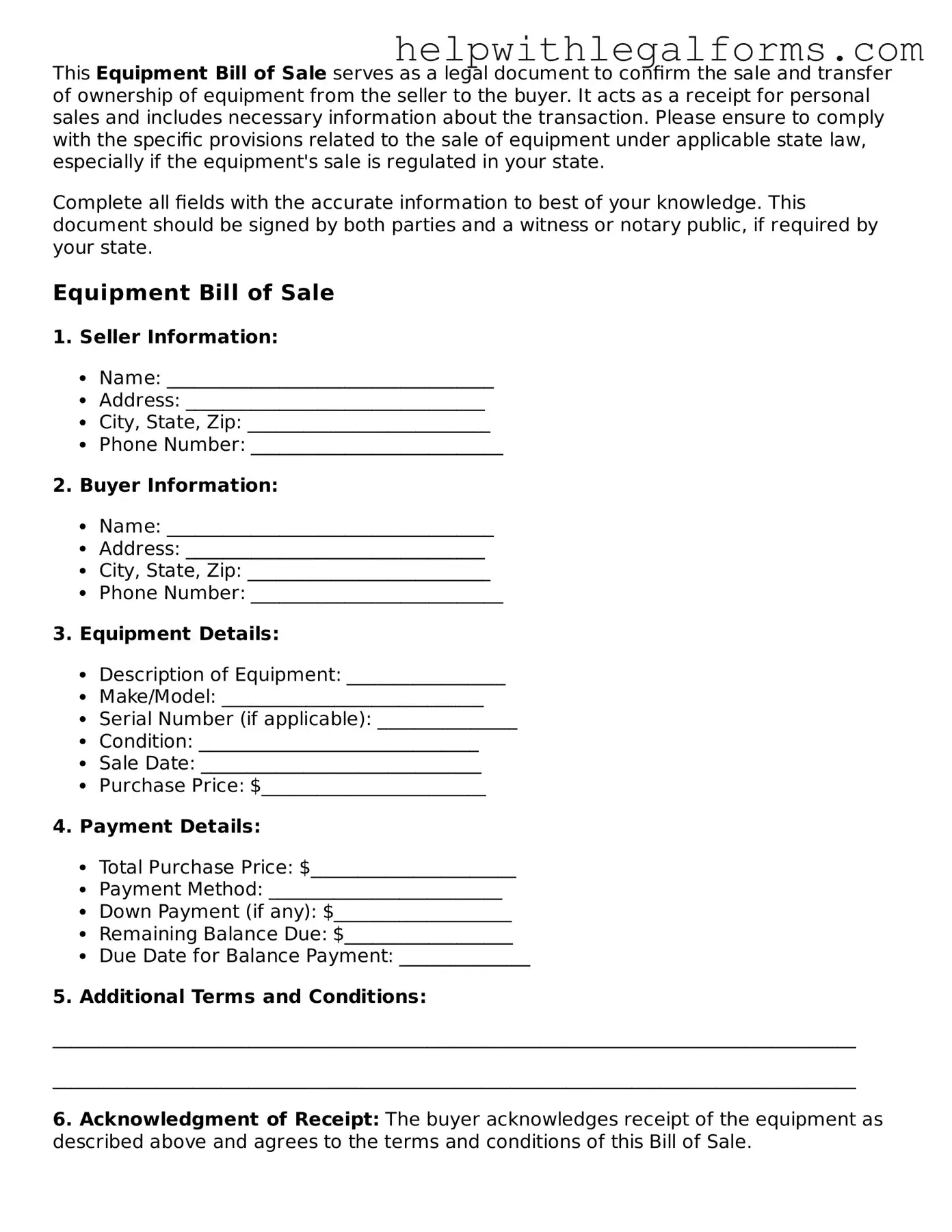What is an Equipment Bill of Sale?
An Equipment Bill of Sale is a written document that records the sale of any type of equipment, transferring ownership from the seller to the buyer. It serves as a legal proof of purchase and outlines specific details about the equipment, the sale price, and the parties involved.
Why do I need an Equipment Bill of Sale?
Having an Equipment Bill of Sale is crucial for several reasons. It legally documents the transaction, helping to protect both the buyer and the seller in case of disputes. It also provides a record for tax purposes and can be necessary for the buyer to register the equipment, if registration is required.
What information should be included in an Equipment Bill of Sale?
The form should include the names and addresses of both the buyer and the seller, a description of the equipment (including make, model, serial number, and any other identifying information), the sale price, the sale date, and signatures of both parties. It may also include terms of sale, such as "as is" or warranty details.
Is a witness or notarization required for an Equipment Bill of Sale?
Requirements vary by state. While some states might not require a witness or notarization, having one or both can add legal robustness to the document, helping to confirm its authenticity and the identity of the signatories.
Can I create an Equipment Bill of Sale myself?
Yes, you can create an Equipment Bill of Sale yourself. There are templates available online, but you should ensure that any template you use includes all necessary information and complies with your state's laws. Alternatively, consulting a legal professional can provide a more personalized and compliant document.
What happens if I don't use an Equipment Bill of Sale?
Not using an Equipment Bill of Sale can lead to several problems, including difficulty proving ownership, challenges in resolving disputes over the sale, and potential tax implications. It's a critical safeguard for both buyer and seller.
Does an Equipment Bill of Sale need to be filed or registered?
The need to file or register the Equipment Bill of Sale depends on the type of equipment and state laws. For certain types of equipment, registration with a government agency may be necessary for the buyer to legally use the equipment.
How can I ensure that an Equipment Bill of Sale is legally binding?
To ensure that an Equipment Bill of Sale is legally binding, make sure that it contains all required information, complies with state laws, and is signed by both parties. Consultation with a legal professional can also help ensure that the document meets all legal requirements.
Can an Equipment Bill of Sale be used for any type of equipment?
Yes, an Equipment Bill of Sale can be used for any type of equipment, from office machinery to industrial tools, fitness equipment, and more. The key is to clearly describe the equipment being sold to avoid any confusion.
What should I do after receiving an Equipment Bill of Sale?
After receiving an Equipment Bill of Sale, the buyer should keep it in a safe place, as it is an important legal document proving ownership. Depending on the type of equipment and local laws, the buyer may also need to take steps to register the equipment in their name.
